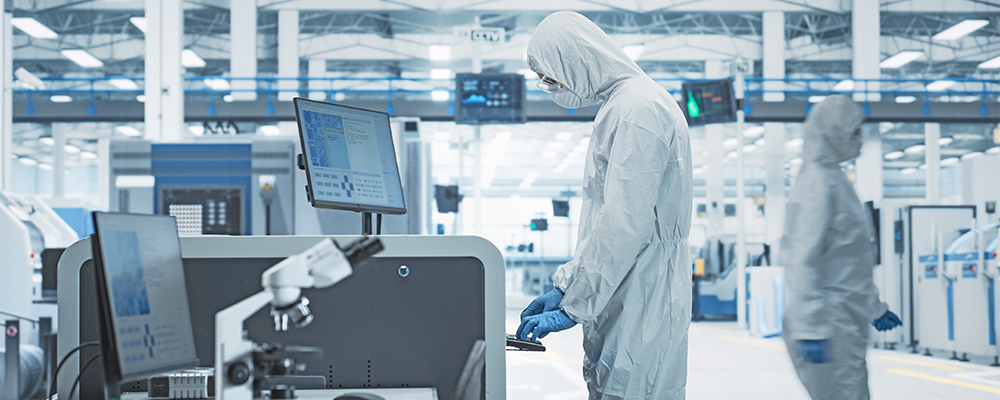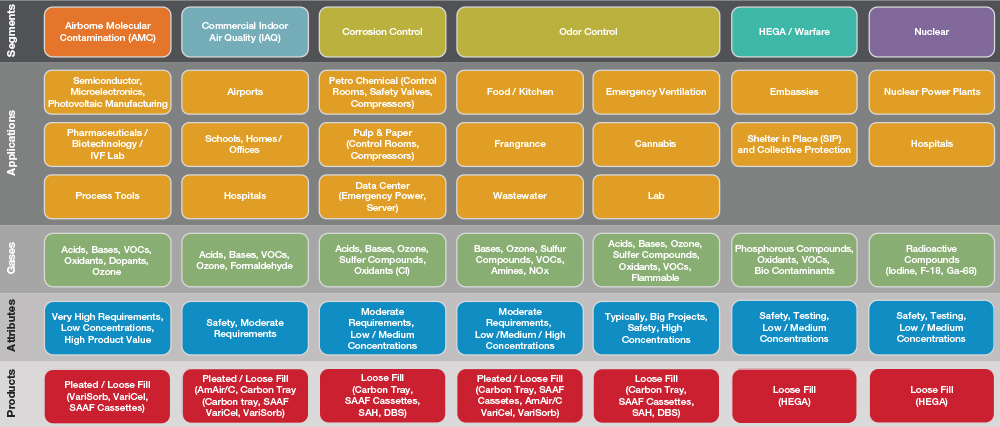


As concerns about air quality continue to grow, ensuring a clean and safe environment has become a priority across many industries. While traditional filtration handles visible particles like dust and pollen, carbon filtration — also known as gas-phase filtration — addresses a more elusive threat: harmful gaseous contaminants that can quietly damage equipment, compromise processes, and impact human health. From industrial facilities to commercial spaces, these advanced solutions are playing an increasingly vital role in protecting what matters most
Why Gas-Phase Filtration Matters
Gaseous contaminants—such as hydrogen sulfide, ozone, volatile organic compounds (VOCs), and oxides of nitrogen and sulfur—exist at the molecular level, making them invisible and unfilterable with standard particulate solutions. These substances can:
Corrode sensitive electronics and instrumentation
Compromise product quality in manufacturing environments
Cause unpleasant or hazardous indoor conditions
Shorten HVAC equipment lifespan
Pose serious risks to occupant health and safety
Through advanced chemical filtration technologies, gas-phase systems effectively neutralize these threats, helping facilities maintain operational integrity and meet safety and regulatory demands.
A Legacy of Innovation
The use of activated carbon dates back to ancient Egypt, particularly its ability to bind to toxins and foul-smelling compounds during their bronze-smelting process, even though the people of that time didn’t understand the molecular process. But its application in gas-phase filtration took a major leap forward during the industrial age—starting in the mid-1800s with early gas masks and expanding into large-scale industrial uses by the early 20th century.
Where Gas-Phase Filtration Is Essential

![]() Gas_Phase_Segments_Applications_graphic_ENLARGE
Gas_Phase_Segments_Applications_graphic_ENLARGE
Gas-phase (carbon) filtration isn’t one-size-fits-all. It’s applied wherever air quality directly influences health, safety, productivity, or process outcomes. Below are some of the key industries and applications:
Commercial & Institutional Buildings
Data Centers & Control Rooms
Semiconductors & Microelectronics
Cannabis, Food, and Fragrance Industries
Industrial Manufacturing & Petrochemical
Healthcare, Pharmaceuticals, & Biotechnology
Government, Military, & High-Security Facilities
Tailoring the Solution
Effective carbon filtration begins with understanding the contaminants of concern, their concentrations, and the air volume being treated. Solutions are designed based on:
Type of gaseous contaminant (odorous, corrosive, or toxic)
Required removal efficiency
Space constraints
Maintenance preferences and operational uptime needs
Desired filter lifespan
Filtration systems may combine gas-phase media with particulate pre- and post-filters to enhance performance and protect the media from clogging or dust carryover.
Monitoring and Maintenance: Staying Ahead of the Curve
Monitoring tools and testing services can help track the life of chemical filtration media and detect early signs of contaminant breakthrough. Common methods include:
Real-time gas sensors that log environmental conditions
Reactivity monitoring coupons that capture corrosion over time
Laboratory analysis of spent media to assess remaining capacity
Regular testing helps facilities optimize replacement cycles, prevent unexpected failures, and minimize total cost of ownership.
When to Replace Chemical Media
Chemical filtration media doesn't last forever. Over time, it becomes saturated and loses its ability to capture contaminants. Key signs that it’s time for replacement include:
A return of odors
Increased levels of contaminants downstream
Known exposure to a contaminant release
Visual indicators (e.g., color change in impregnated media)
Scheduled end-of-life based on testing or operational hours
Replacing media on time ensures uninterrupted protection and extends the life of systems and assets.
Clean Air is Good Business
Whether you’re safeguarding a data center from corrosion, improving air quality in a school, or managing emissions in an industrial facility, carbon media filtration is a critical line of defense. It protects people, processes, and investments from the damage caused by invisible contaminants in the air.
Explore AAF’s gas-phase filtration solutions, and partner with us to build a cleaner, safer, and smarter future. Contact an AAF representative to discuss the best filtration strategy for your facility's needs.